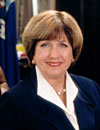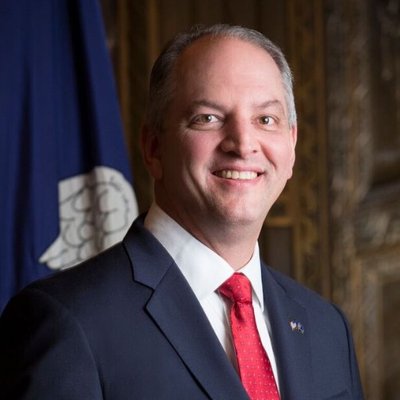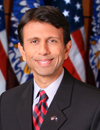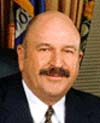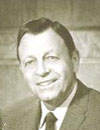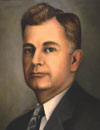Louisiana
Gov. Kathleen Babineaux Blanco
- January 12, 2004 - January 13, 2008
- Democratic
- December 15, 1942
- August 18, 2019
- Louisiana
- University of Louisiana at Lafayette
- Married Raymond Blanco; six children, seven grandchildren
About
KATHLEEN BABINEAUX BLANCO was born in Coteau, and she received a bachelor’s degree in business education from the University of Louisiana at Lafayette. Before joining the public sector, she taught at Breaux Bridge High School, a public school in Southwest Louisiana. Blanco began her career as a public servant in 1984, when she became the first woman ever elected to represent the people of Lafayette in the state legislature. Five years later she was elected to the Public Service Commission, where she became the first woman to serve as a commissioner and, later, she was the first woman to chair the Commission, from 1993 to 1994. Blanco was elected lieutenant governor in 1995, and was overwhelmingly reelected to her second term in 1999, winning 80 percent fo the vote. As the state’s second-highest official, she supervised the Department of Culture, Recreation and Tourism. Under her leadership, tourism in Louisiana increased by 41 percent. This growth led to a $2.5 billion increase in the tourism industry’s economic contribution to the state and the creation of 21,000 new tourism-related jobs.
On January 12, 2004, Blanco became the first woman governor of Louisiana. Committed to education excellence, she chaired the Southern Regional Education Board and made Louisiana a leader in improved education standards throughout the South. She was responsible for passage of the largest increased investment in education in the state’s history. She expanded pre-kindergarten to cover all at-risk children in Louisiana, made great strides in improving teacher quality and accountability, and fought for pay raises for teachers. Blanco also led one of the most aggressive economic development efforts in state history, making significant investments in the advanced technology infrastructure needed to diversify Louisiana’s economy as well as in the highway, port, and infrastructure improvements needed to increase Louisiana’s ability to compete for new jobs. In all, she attracted nearly $24 billion in new investments representing nearly 35,000 new jobs in just three years. In addition, she was responsible for the expansion of access to health insurance for Louisiana’s children, and created a nationally-recognized model of excellence in juvenile justice by overhauling Louisiana’s state corrections system. In 2005, Governor Blanco led Louisiana through Hurricane Katrina and its aftermath, the largest natural disaster in American history. Because she had revamped the evacuation plan for the state to feature contraflow on the interstate system, many lives were saved and more than 1.3 million people were moved to safety. She commanded more troops than any governor in U.S. history, deploying tens of thousands of National Guardsmen to storm-impacted areas across south Louisiana. She led a ten-month fight to secure the additional funding needed from Congress to help rebuild the more than 200,000 destroyed homes in Louisiana. And under her leadership and guidance, well over $2 billion in recovery dollars is at work aiding local communities. Included in that figure are investments in school and home rebuilding, improving emergency response capabilities, and addressing health care needs. Blanco also established the Coastal Protection and Restoration Authority and led the fight to secure America’s wetland, Louisiana’s natural barrier against future storms. During her gubernatorial tenure, Blanco served on the National Governors Association’s Center for Best Practices board as well as on two NGA committees: Natural Resources; and Education, Early Childhood, and Workforce.

